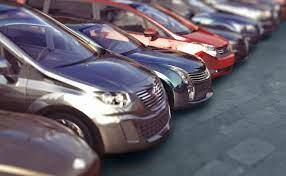Finance can be defined as a choice or a procedure made by a customer when he or she decides to acquire a pricey item and pays the balance in recurrent installments. The definition of a lease, on the other hand, is a choice or a method through which a leasing firm decides to purchase a financial asset on behalf of others.
While the leasing company or the dealer is regarded as the financial asset’s owner in a lease option, the customer is considered to be the product’s owner in a finance option.
When choosing a financing option, the buyer may or may not be obliged to put money down; in contrast, when choosing a lease option, there is simply no need for down payments. While the lease option is viewed as an operational expense, financing is a type of capital expenditure.
While the lessor is qualified to claim depreciation in the case of a leasing option, the hirer can actually claim it in a finance option.
Difference Between Finance and Lease
Finance is when purchasing relatively expensive items, the buyer agrees to make regular payments as repayment. Another name for it is “Hire Purchase Financing.
Leasing is seen as a method of borrowing in which the leasing company makes purchases on the client’s behalf. The product or commodity is subsequently made available for usage under finance or lease in exchange for predetermined monthly rent payment for the duration of the contract entered into by finance and lease parties.
#1. When one uses finance, they buy somewhat expensive goods or services and are required to pay them back over time in the form of regular payments. Cars, computers, machinery, and homes are the main goods.
Contrarily, lease is a borrowing method where the leasing company purchases instead of the individual, allowing it to be used for a certain period of time, typically a few years. For the duration of the period until the contract ends, the commodity is usable.
#2. Finance which is higher purchase payments are made up of the principal amount and effective interest for the whole term of the agreement. In contrast to lease, which entails rental payments are calculated as the cost of asset utilization.
#3. In finance, once he has the money available, the user must buy the asset. In the case of leasing, the lessee makes rental payments while using the asset for the duration of the lease. At the end of the lease term, the lessee has the choice to purchase the asset.
#4. Since finance requires full payment of the item’s cost, it typically has a higher monthly price than leasing. Leasing simply requires payment for the fraction that is really utilized.
#5. In order to obtain finance, borrowers must pledge their current assets as primary or collateral security; however, the lease does not require any kind of security.
#6. Let’s say a loan was used to purchase the item. In that instance, the user is eligible to make tax claims for both asset depreciation and interest on loan payments. When using lease financing, the user is limited to claiming lease rentals that are constant throughout the lease term.
#7. The user will be limited to using only the particular commodity that Finance or Lease wants to purchase if financing is used. Leasing will give the user the chance to test out a new good or version after the lease has run out. For example, if the lease on one car expires, the user might choose to lease a new car.
#8. If finance is used, the hirer is in charge of repairs and maintenance. In the case of a lease, however, it is the lessor in the case of an operating lease and the lessee in the case of a financial lease.
Lease vs Finance Calculator
Financing and Leasing a Car
The main distinctions between leasing and financing a car have to do with what you pay for specifically and what commitments you are subject to.
Ownership
Finance: The car is yours, so you may keep it for as long as you like, use it any way you like, and modify it however you like.
Lease: You pay to use the car for a set amount of time; you do not own it. You have the option to buy it or return it at the conclusion of the term.
Down Payments
Finance: Include taxes, registration fees, the purchase price in cash or a down payment, and maybe additional expenses.
Lease: Typically consists of the down payment, the first month’s payment, a refundable security deposit, taxes, registration fees, and sometimes other expenses.
Monthly Payments
Finance: Due to the fact that you are financing the entire cost of the vehicle, loan payments are often greater than lease payments.
Lease: Because you only pay for the depreciation of the car during the lease period, plus interest, rent costs, taxes, and fees, lease payments are almost always less than loan (finance) payments.
Due to the fact that you are financing the entire value of the vehicle, loan payments are often greater than lease payments.
Early Termination
Finance: Anytime you wish, you are free to trade in or sell your car, and any proceeds will go toward paying off the loan.
Lease: Early termination fees, which are typically as expensive as continuing with the remainder of the lease period, must be paid if you want to break the lease early.
Vehicle Return
Finance: If at any time you decide you want to purchase another car, you are responsible for trading the current one in or selling it.
Lease: You have the option to return the car and walk away from the lease after paying the end-of-lease fees.
Depreciation
Finance: The value of the car will decrease, but you may do whatever you want with the equity.
Lease: You as the lessee are unaffected by the car’s future worth, but you are also not given any equity in the vehicle.
Customizing
Finance: You own the vehicle, so you are free to make any changes you like while being conscious that doing so would reduce its ability to be sold in the future.
Lease: The majority of the time, the person or company who is leasing you the automobile will want the vehicle to be in excellent shape to resell, in the event that you decide against purchasing it yourself when the lease is over.
You must therefore take away all modifications and customizations at the end of the lease and pay for any damage or long-term adjustments that were brought about as a result.
Wear & Tear
Finance: Anyone having a car loan or financing should only be concerned about how it will impact the resale value.
Lease: Most leases impose penalty fees for repairs if your automobile sustains excessive wear and tear.
Distance Restrictions
Finance: You are free to travel as frequently and as far as you like, but keep in mind that doing so will reduce the car’s market value.
Lease: The majority of leases call for you to agree on an annual kilometre cap, and if you exceed that limit, you’ll be charged more.
In the end, your long-term goals will determine whether you choose to finance or lease your car. Leasing makes considerably more financial sense if you’re the kind of person who likes to buy a new car every few years. However, getting a loan is the preferable choice if you plan to buy a car and keep it until it breaks down.
It all depends on your preferred amount of financial commitment and car ownership in the middle.
Difference Between Buying And Leasing A Car
Ownership is the main distinction between buying and leasing a car. While leasing a car only provides you temporary ownership with some limitations, buying a car gives you full ownership and the freedom to do whatever you want with it.
Payments
When compared to monthly payments for the same vehicle financed with a conventional personal auto loan, a typical automobile lease payment might be much less. This is due to the fact that lease payments are calculated using the vehicle’s depreciation in value throughout the term of the lease rather than the vehicle’s full value.
Ownership
Drivers have the option of leasing a car that is finer and costlier than the one they could afford to buy. Most leases last between two and four years, after which you are free to lease a new vehicle.
You don’t have to go through the drawn-out sales process after your lease expires. You can drive off in a brand-new leased car while leaving the bother of the sales process to someone else.
When you purchase an automobile, you are not required to return it at the end of the loan. However, you’ll need to locate someone to buy it from you if you want to get rid of it.
Warranties
Your new leased car will probably be covered by warranty for the duration of the lease and so rarely need anything more than routine maintenance. You never have to be concerned about any mechanical issues when you lease. You will always be protected.
When you purchase an automobile, it might come with a brief warranty. However, once the warranty expires, you will be responsible for covering all repairs out of pocket unless you purchase an extension.
10 Reasons Not To Lease A Car
Compared to buying a car, leasing a car has more restrictions. It’s obvious right away that you’re only borrowing this car; it’s not yours.
The reduced initial cost of renting may be worthwhile for some people. But not owning the asset you’re operating can have negative implications. Leasing has all the dangers associated with ownership but none of the advantages.
Check out 8 Banks That Let You Overdraft Right Away
A rented car isn’t very customizable
When you lease a vehicle, the dealer anticipates receiving it back in the exact state that they delivered it in, minus normal wear and use. This means that before returning your leased car, even little modifications—like newly installed window tint—must be taken out. Massive penalties will be imposed for any significant changes.
Your lease terms continue to apply even if you are involved in an accident
Your lease payments won’t change even if you total the automobile. As a result, you risk paying a significant sum to the dealership for a vehicle that is a total loss if you don’t have gap coverage.
Insurance premiums and registration costs are frequently higher
You could have to spend more to register a leased car than a bought one, depending on the state you live in. Additionally, your dealer will demand you to carry larger limits of full coverage insurance than would be necessary for a car you own, regardless of your state’s laws.
Maintenance and repairs cost money.
Some manufacturers will include maintenance and some repairs in the cost of your lease, but the majority will expect you to pay for everything on your own. Additionally, you can face penalties at the conclusion of your lease period if you don’t maintain your car as required.
The vehicle must be kept in perfect condition.
The car dealer will anticipate receiving the vehicle back in essentially the same condition that they delivered it to you in when they lease it to you. They will, of course, permit some wear and tear, but if you return the car with any damage they deem excessive, you risk facing stiff fines.
The number of miles you can go is constrained.
The majority of leases impose a yearly mileage cap. When you sign your lease, you and your lender will decide on a mileage cap. If you go over that limit, you’ll be charged for extra mileage.
Early departure will cost you.
You normally have to pay the remaining balance on the lease terms as well as hefty early-termination costs in order to break a lease. There are ways to prevent this, but they all entail doing something that ultimately serves the dealer’s interests over yours.
At the end of your lease, you will have nothing to invest toward a new vehicle.
You leave with nothing when your lease expires. All the payments you’ve previously made are in vain even if you decide to purchase the vehicle you leased.
To make matters worse, you frequently have to pay a lease disposition charge, which means that not only do you leave empty-handed, but you also have to pay for the privilege.
Leasing has a higher interest rate than buying does.
Even though a lease may have lower monthly payments than a purchase would, the majority of that payment will go toward interest on a vehicle that you do not own. High interest rates are never a wise choice.
Spending thousands of dollars on something you’re just returning
Renting an apartment and leasing a vehicle are very similar. You pay several hundred dollars per month for the right to use something, but that sum is NOT a down payment. If you decide to purchase your vehicle at the conclusion of your lease, you’ll probably end up paying thousands more overall than if you’d simply financed it.
See CAR DEALERSHIPS THAT WORK WITH BANKRUPTCIES
Conclusion
Depending on the borrower’s ability and the outcome of the commodity for which either method is being examined, the choice of finance or lease as a payment option is made.
Before making a choice, one should think about these factors as well as the advantages and disadvantages. In any situation, there is no general guideline for a certain approach to be taken, and the concept can vary from person to person.
FAQs on the Difference Between Finance and Lease
Leasing a car is when a vehicle is leased (or used) for a predetermined amount of time for a predetermined sum of money. It is sometimes provided by dealers as an alternative to purchasing a car, but it is widely utilized by businesses as a way to obtain (or use) automobiles for commercial purposes without the typically required cash commitment.
The main distinction between a lease and a loan is that, following the primary period (often 2, 3 or 4 years), the vehicle must either be returned to the leasing company or bought outright for its residual value.
Financing a car is a form of loan. When you buy the car, a financial institution will cover a specific amount, which you will have to pay back with interest at a set monthly rate.
There may be advantages to leasing a car for some motorists. Leasing could result in paying less each month to drive the same car because monthly payments for a car lease are often cheaper than monthly payments for a car loan.
References
- wallstreetmojo.com – difference between finance and lease
- goodcalculators.com – lease vs finance calculator
- humberviewgroup.com – financing and leasing a car
- thebalance.com – difference between buying and leasing a car






